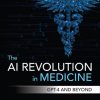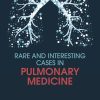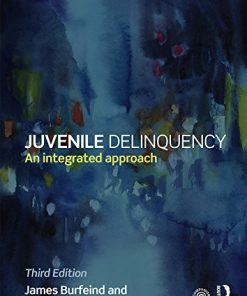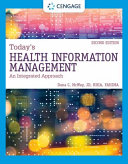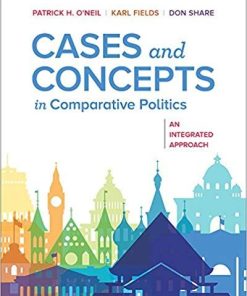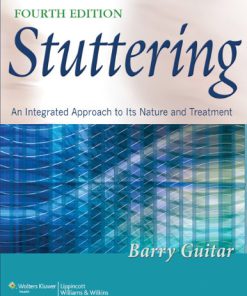(Ebook PDF) Palaeopathology and Evolutionary Medicine An Integrated Approach 1st edition by Kimberly Plomp, Charlotte Roberts, Sarah Elton, Gilian Bentley ISBN 9780192589613 019258961X full chapters
$50.00 Original price was: $50.00.$25.00Current price is: $25.00.
(Ebook PDF) Palaeopathology and Evolutionary Medicine An Integrated Approach 1st edition by Kimberly A Plomp, Charlotte A. Roberts, Sarah Elton, Gilian R. Bentley-Ebook PDF Instant Download/Delivery:9780192589613, 019258961X
Instant download Full Chapter of Palaeopathology and Evolutionary Medicine An Integrated Approach 1st edition after payment
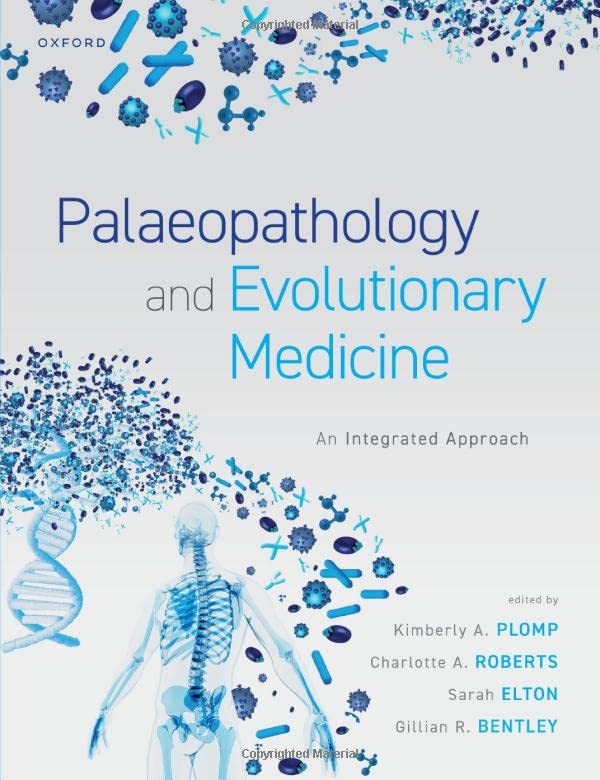
Product details:
ISBN 10: 019258961X
ISBN 13: 9780192589613
Author: Kimberly A Plomp, Charlotte A. Roberts, Sarah Elton, Gilian R. Bentley
Evolutionary medicine has been steadily gaining recognition, not only in modern clinical research and practice, but also in bioarchaeology (the study of archaeological human remains) and especially its sub-discipline, palaeopathology. To date, however, palaeopathology has not been necessarily recognised as particularly useful to the field and most key texts in evolutionary medicine have tended to overlook it.
This novel text is the first to highlight the benefits of using palaeopathological research to answer questions about the evolution of disease and its application to current health problems, as well as the benefits of using evolutionary thinking in medicine to help interpret historical disease processes. It presents hypothesis-driven research by experts in biological anthropology (including palaeopathology), medicine, health sciences, and evolutionary medicine through a series of unique case studies that address specific research questions. Each chapter has been co-authored by two or more researchers with different disciplinary perspectives in order to provide original, insightful, and interdisciplinary contributions that will provide new insights for both palaeopathology and evolutionary medicine.
Palaeopathology and Evolutionary Medicine is intended for graduate level students and professional researchers in a wide range of fields including the humanities (history), social sciences (anthropology, archaeology, palaeopathology, geography), and life sciences (medicine and biology). Relevant courses include evolutionary medicine, evolutionary anthropology, medical anthropology, and palaeopathology.
Table of contents:
1. What’s It All About? A Legacy for the Next Generation of Scholars in Evolutionary Medicine
Kimberly A. Plomp, Charlotte A. Roberts, Sarah Elton, and Gillian R. Bentley
1.1 Background
1.2 Palaeopathology and Medicine
1.3 Aims of the Book
1.4 Thematic Overview
1.4.1 Co-evolution of Host and Pathogen
1.4.2 Constraints on Selection
1.4.3 Mismatch with Current Industrialised Societies
1.4.4 Physiological Defences
1.4.5 Reproduction at the Expense of Health
1.4.6 Trade-offs
1.5 The One Health Initiative and Future Directions
1.6 Conclusion
References
2. Developmental Origins of Health and Disease (DOHaD): Perspectives from Bioarchaeology
Julia Gamble and Gillian Bentley
2.1 The Developmental Origins Model in Contemporary and Past Populations
2.1.1 Bioarchaeological Evidence
2.1.2 Insights from Teeth
2.2 History of Development of the DOHaD Model
2.2.1 Famine Studies Relating to DOHaD and Bioarchaeology
2.2.2 Development of DOHaD Hypotheses
2.2.3 Further Development of DOHaD Models
2.3 Life Course Approaches to Health
2.3.1 Longitudinal Cohort Studies and Life Course Analyses in Recent Populations
2.3.2 Life Course Approaches in Bioarchaeology
2.4 Exploring Explanatory Mechanisms Between Early Life Development and Later Life Health
2.4.1 Palaeoepigenetics
2.5 Future Directions
References
3. Acquired Spinal Conditions in Humans: The Roles of Spinal Curvature, the Shape of the Lumbar Vertebrae
Kimberly A. Plomp, Ella Been, and Mark Collard
3.1 Introduction
3.2 Adaptations for Bipedalism in the Human Vertebral Column and Lumbar Vertebrae
3.3 Clinical Evidence for an Impact of Spinal and Vertebral Shape on Spinal Health
3.4 Palaeopathological and Comparative Anatomical Evidence for an Impact of Spinal and Vertebral Shape
3.5 Evolutionary Origins of Vertical Intervertebral Disc Herniation and Spondylolysis
3.6 Potential Biomechanical Explanations for Links Between Vertebral Traits and Acquired Spinal Disorders
3.7 Future Directions
3.8 Conclusions
References
4. Birthing Humans in the Past, Present, and Future: How Birth Can Be Approached Holistically Through Time
Sarah-Louise Decrausaz and Frances Galloway
4.1 Introduction
4.2 How Does Research on Childbirth in the Past Contribute to Understanding the Evolution of the Human Birth Mechanism?
4.2.1 The Obstetric Dilemma
4.3 How Do Bioarchaeology and Palaeopathology Offer Unique Perspectives on Childbirth?
4.3.1 Birth in Hominins
4.3.2 Birth in Past Populations
4.3.3 The Siren Song of Parturition Scarring
4.3.4 Estimating Birth-related Mortality in the Past
4.4 How Can Knowledge of the Past Contribute to Modern Clinical Research on Childbirth and Obstetric Care?
4.5 Conclusion
References
5. Isotopic Reconstruction of Ancient Human Diet and Health: Implications for Evolutionary Medicine
Nicole Burt and Alexandra M. Greenwald
5.1 Introduction
5.2 Stable Isotope Basics
5.2.1 How Stable Isotope Analysis Reconstructs Diet
5.2.2 Stable Isotopes, Pathology, and Health
5.3 Diet, Pathology, and Evolutionary Implications
5.3.1 Hominin Dietary Ecology
5.3.2 Intensification and Agriculture
5.3.3 Infant and Early Childhood Diets
5.4 Isotope Applications in Evolutionary Medicine
5.4.1 Stable Isotope Analysis for Studying Health in a Modern Context
5.4.2 Carbon Isotopes and Obesogenic Diets
5.4.3 Nitrogen Isotopes and Early Infant Health
5.5 Culturally Sensitive and Inclusive Applications of Evolutionary Medicine
5.5.1 Decolonising Foodways: Native Foodways Renaissance
5.5.2 Decolonising Foodways: Translating USDA Recommendations
5.6 Conclusions
References
6. Developmental, Evolutionary and Behavioural Perspectives on Oral Health
Tanya M. Smith and Christina Warinner
6.1 Teeth as Childhood Record Keepers
6.1.1 Developmental Disruptions Begin at Birth
6.1.2 What Can These Disruptions Tell Us About Childhood?
6.1.3 Early Life Dental Disruptions and Disease
6.1.4 Dental Disruptions and Early-life Diets
6.2 Those Pesky Wisdom Teeth
6.2.1 Why Are M3 Problems So Common in Some of Us?
6.3 Our Teeth Are Never Alone: The Oral Cavity as a Microbial Culture Dish
6.3.1 The Oral Microbiome in Health
6.3.2 The Microbial Biogeography of the Oral Cavity
6.3.3 The Formation of Dental Calculus
6.4 Caries, Gum Disease, and Tooth Loss: Additional Diseases of Civilisation?
6.4.1 Caries Prevalence in the Past
6.4.2 Modern Perspectives on Caries
6.4.3 Gum Disease and Tooth Loss
6.5 Use it or Lose It: Evolutionary and Behavioural Perspectives on Orthodontics
6.6 Conclusions and Future Directions
References
7. Palaeoecology: Considering Proximate and Ultimate Influences on Human Diets and Environmental Responses
Malcolm C. Lillie and Sarah Elton
7.1 Introduction
7.1.1 Background
7.2 Environments and Health Status Along the Dnieper River
7.2.1 Vasilyevka III
7.2.2 Vasilyevka II
7.2.3 Yasinovatka
7.2.4 Dereivka I
7.3 Discussion
7.4 Conclusion
References
8. Human Resistance and the Evolution of Plague in Medieval Europe
Kirsten Bos and Sharon N. DeWitte
8.1 Plague in the Past and Today
8.1.1 History of the Black Death
8.1.2 Consequences of the Black Death
8.1.3 Differences Between the Second and Third Pandemics
8.1.4 Why Study Plague in the Past?
8.2 Ancient DNA Analyses of Medieval Human Populations
8.2.1 Detecting Plague in Archaeological Contexts
8.2.2 Where Has Ancient Plague DNA Been Found?
8.2.3 What Effect Did the Black Death Have on Human Genetic Variation?
8.3 Bioarchaeological Analyses of Plague
8.3.1 Why Was the Black Death So Deadly?
8.3.2 Who Died During the Black Death?
8.3.3 What Effects Did the Black Death Have on Health and Demography?
8.4 Conclusion
References
9. Leprosy is Down but Not Yet Out: New Insights Shed Light on Its Origin and Evolution
Charlotte Roberts, David M. Scollard, and Vinicius M. Fava
9.1 Introduction
9.2 Leprosy: Present and Past
9.2.1 The Bacterium
9.2.2 Transmission
9.2.3 The Immune System and Leprosy
9.2.4 Nerve Injury
9.2.5 Stigma and Leprosy
9.3 The Origin and Evolution of Leprosy
9.4 Leprosy in the Past
9.4.1 The Evidence
9.5 Conclusions
9.6 Future Directions
References
10. Preventable and Curable, but Still a Global Problem: Tuberculosis from an Evolutionary Perspective
Charlotte A. Roberts, Peter D.O. Davies, Kelly E. Blevins, and Anne C. Stone
10.1 Introduction
10.2 What is Known About Tuberculosis (TB) Today?
10.2.1 How TB Affects the Body
10.2.2 Epidemiology, Prevention, and Treatment
10.2.3 The Genetics of TB
10.3 What Do We Know About TB in the Past?
10.3.1 The Evidence from Palaeopathology
10.3.2 The Evidence from aDNA Analyses of the MTBC
10.4 Synthesis of the Skeletal and Biomolecular Evidence of TB from a Global Perspective
10.4.1 The Origin of TB: Palaeopathological and Ancient and Modern Molecular Data
10.4.2 TB and the Epidemiological Transitions
10.4.3 Evidence for the Distribution and Spread of TB Around the World
10.5 Discussion
10.6 Conclusions
References
11. Evolutionary Perspectives on Human Parasitic Infection: From Ancient Parasites to Modern Medicine
Marissa L. Ledger and Piers D. Mitchell
11.1 Introduction
11.2 Evidence for Parasites Throughout Human History
11.3 Human-Parasite Co-evolution
11.3.1 Human Evolution in Response to Parasite Infection
11.3.2 Parasite Evolution in Response to the Human Host
11.4 Applications of Palaeoparasitology and Human–Parasite Evolution
11.4.1 The Hygiene Hypothesis
11.4.2 A Role for Palaeoparasitology
11.5 Conclusions
References
12. Cardiovascular Disease (CVD) in Ancient People and Contemporary Implications
Randall C. Thompson, Chris J. Rowan, Nicholas W. Weis, M. Linda Sutherland, Caleb E. Finch, Michaela L. H. Ross
12.1 Introduction
12.2 The Evidence for Ancient CVD
12.2.1 CT Scans of Ancient Mummies
12.2.2 Other Evidence of Atherosclerosis Found in the Remains of Ancient People
12.2.3 Unangan Female of the Aleutian Islands
12.3 Other CVDs Seen in Mummies
12.4 CVD in Great Apes
12.5 Discussion
References
13. Connecting Palaeopathology and Evolutionary Medicine to Cancer Research: Past and Present
Carina Marques, Zachary Compton, and Amy M. Boddy
13.1 Introduction
13.2 Cancer in Evolutionary Medicine
13.2.1 Proximate and Ultimate Perspectives on Cancer Biology
13.2.2 Evolutionary Mismatch and Cancer
13.3 Cancer in Palaeopathology
13.3.1 Case Study: Can Palaeopathology Provide Information on Temporal Trends of Cancer in Ancient Human Populations?
13.4 Discussion: Cancer is Not a New Disease
13.4.1 Cancer Prevalence is Underestimated in Palaeopathology
13.4.2 Overview of Evolutionary Mismatch
13.4.3 The Agricultural Transition
13.4.4 Pathogen Exposure
13.4.5 Diet
13.4.6 Toxins and Carcinogens
13.4.7 Low Birth Rates
13.4.8 Increased Adult Survival
13.4.9 Culture as a Buffer
13.5 Conclusion and Future Prospects
References
14. Stress in Bioarchaeology, Epidemiology, and Evolutionary Medicine: An Integrated Conceptual Model
Daniel H. Temple and Ashley N. Edes
14.1 Introduction
14.2 Starving Animals and Active Glands: Early Models of Stress in Experimental Settings
14.3 From the Lab to the Field: Formalised Studies of Stress and Environment
14.4 Beyond Cortisol: A Multi-faceted Approach to Stress Physiology
14.5 Thrifty Phenotypes, Plasticity, and Constraint: The Emergence of a Life History Perspective
14.6 Stress in the Past: Foundational Research in Bioarchaeological Approaches to Physiological Perturbations
14.7 Paradox, Promise, and the Life History Framework: Contemporary Studies of Stress in Bioarchaeology
14.7.1 Epidemiological Modelling
14.7.2 Skeletal Frailty Index
14.7.3 Life Course and Life History Perspectives
14.7.4 Pathophysiological Approaches
14.8 Conclusions
References
15. Metabolic Diseases in Bioarchaeology: An Evolutionary Medicine Approach
Jonathan C. Wells, Nellissa Y. Ling, Jay T. Stock, Hallie Buckley, and William R. Leonard
15.1 Introduction
15.2 Background to Gout, DISH, and Type 2 Diabetes Mellitus (T2DM)
15.2.1 Gout
15.2.2 Bioarchaeological Evidence of Gout
15.2.3 DISH
15.2.4 Skeletal Evidence of DISH in the Archaeological Record
15.2.5 T2DM
15.2.6 Identifying T2DM in the Archaeological Record
15.3 Models of the Aetiology of Metabolic Disorders
15.3.1 Ecological Models of Metabolic Disease Risk
15.3.2 Life History Approaches to Understanding Metabolic Disease Risk
15.4 Conclusions
References
16. The Palaeopathology of Traumatic Injuries: An Evolutionary Medicine Perspective
Ryan P. Harrod and Anna J. Osterholtz
16.1 An Evolutionary Medicine Approach to Traumatic Injury in the Past
16.2 Understanding Biomechanics and Biology
16.2.1 Biomechanics and Tissue Type
16.3 The Physiological Impact of Traumatic Injuries
16.4 Reconstructing an Individual’s Lived Experience
16.5 Using Palaeopathology to Understand Trauma in the Past
16.6 Trauma as Part of Syndemics and the Importance of the One Health Approach
16.7 Conclusion
References
17. Uncovering Tales of Transmission: An Integrated Palaeopathological Perspective on the Evolution of Infectious Disease
Elizabeth W. Uhl and Richard Thomas
17.1 Overview
17.2 Shared Pathogens in Sparse Populations: Tapeworms (Taeniid sp.) in Hunter-Gatherers
17.3 From Sparse to Crowded Populations and from Humans to Animals to Humans: The Mycobacterium Tuberculosis Complex
17.4 Infection Transmission by a Vector: Farming, Urbanisation, and the Rise of Plasmodium falciparum (Malaria)
17.5 Herding, Farming, and Warfare: Transmission of Shared Intracellular Bacterial Pathogens: Brucella, Yersinia, and Others
17.6 Urbanisation, War, and Conquest: Morbilliviruses—Shared Pathogens in Crowded Environments
17.7 Conclusions
References
18. Now You Have Read the Book, What Next?
Gillian Bentley, Charlotte A. Roberts, Sarah Elton, and Kimberly A. Plomp
References
People also search:
palaeopathology and evolutionary medicine an integrated approach
what is evolutionary medicine
why is evolutionary medicine important
evolutionary medicine topics
evolutionary medicine examples
You may also like…
Biology and other natural sciences - Ecology
Coastal Wetlands: An Integrated Ecosystem Approach Gerardo Perillo
Business & Economics - Management & Leadership
Strategic Management: Theory: An Integrated Approach 12th Edition Charles W.L. Hill
Medicine - Health-Related Professions
Today’s Health Information Management: An Integrated Approach (Third Edition)
Uncategorized
(eTextbook PDF) for Cases and Concepts in Comparative Politics: An Integrated Approach
Business & Economics
Communication Skills and Soft Skills – An Integrated Approach 1st edition
Uncategorized
Stuttering: An Integrated Approach to its Nature and Treatment 4th Edition, (Ebook PDF)


